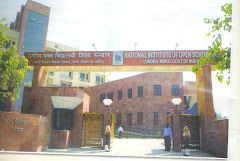
The Internet is a world-wide network of information resources and a powerful communication tool. Information on virtually any subject may be found on the Internet. In the past, access to the Internet was mainly restricted to the academic community, but now the 'digital superhighway' is also open for both business and home users.
The Internet offers users a powerful tool which may be used in a number of ways, including education, the collection and retrieval of information, and the rapid and automated distribution of information to large groups of people.
Reflect on the use of Internet in your personal lives and how would you like to use Internet for your communication and enhancing effectiveness of your work.

